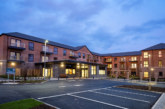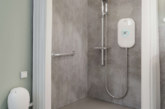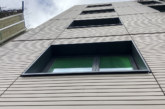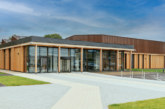As the public sector continues to face the challenge of managing the needs of an aging population and increasing incidence of dementia, Stantec‘s Jonathan Wilson discusses the need for progressive residential care that enables greater enjoyment of later years.
The idea of moving into a care home is very much an option of last resort for most of us, because it means moving from the dwelling that has been the fabric of our life, into an environment that is likely to be the last place we live. Endless leisure time in fully catered accommodation is much less appealing when everyday activities are curtailed and independent decisions about when/where to go out and when to stay in are removed.
A normal daily routine, a degree of autonomy and inter-generational social contact should be fundamental to care home design. Boredom is an under-acknowledged malaise for people in care, yet the driving factor in traditional care home design is resident safety. This implicitly leads to design decisions based on an older person’s limitations, rather than their potential for human experience.
While physical well-being and safeguarding are essential, peoples’ fundamental needs as human beings do not change as they get older: the need to feel in control of our own lives, to feel interested in the world around us and to engage with other people does not diminish. If anything it becomes more pressing as choices are reduced by age. Care home design must consider older peoples’ needs as individuals ahead of their physical and cognitive challenges to create places where people can thrive in their advanced years, rather than accepting inevitable decline.
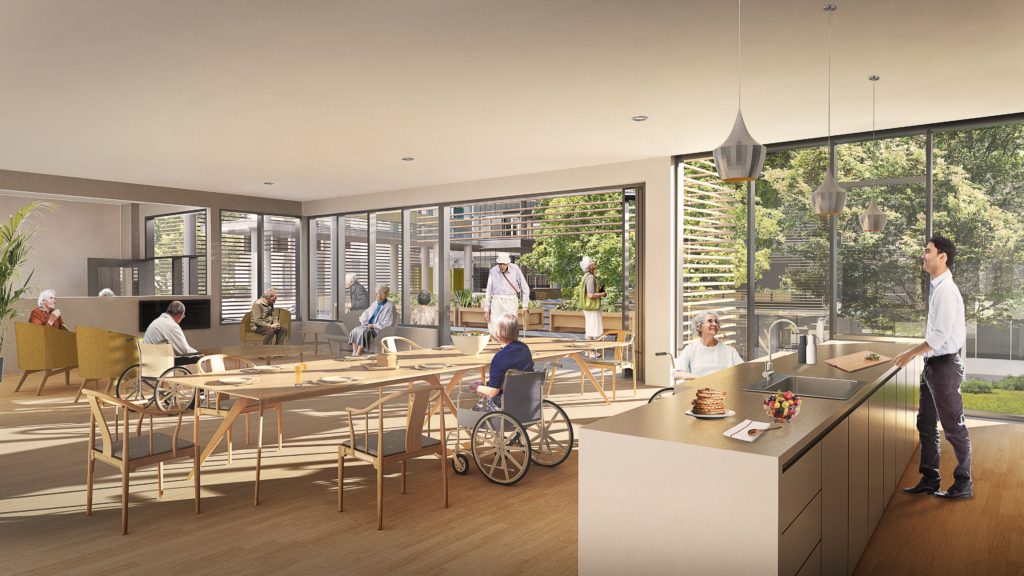
From care home to care community
A major development to accommodate 320 residents with dementia designed by Stantec in Canada articulates how this vision can be achieved. Residents live in houses of up 10 people and the design prioritises autonomy, engagement with the outside world and involvement in ‘normal life’ to support the health, well-being and enjoyment of every individual.
Each resident has his/her own en-suite studio apartment within the communal house, with a kitchenette and glass-fronted cabinets for their personal crockery, enabling them to prepare a light meal, host guests or enjoy a meal prepared by visiting family. Each ‘household’ also has a living/dining area and kitchen where all 10 household residents can eat around a family-sized table. Residents can choose to join in with food prep and washing up alongside communal dining, allowing them to engage with the day-to-day activities of ‘normal life’ if they wish, or opt for a catered meal in their room.
The wider care home design enables enhanced opportunities for autonomous circulation. Almost all circulation is outdoors through courtyards and covered walkways, encouraging residents to engage with the world on a sensory level — feeling the wind, sun, rain on their skin — and viscerally experiencing the time of day and season. Creating the potential for experiencing the outdoors in this way helps to support improved mental health and a sense of well-being.
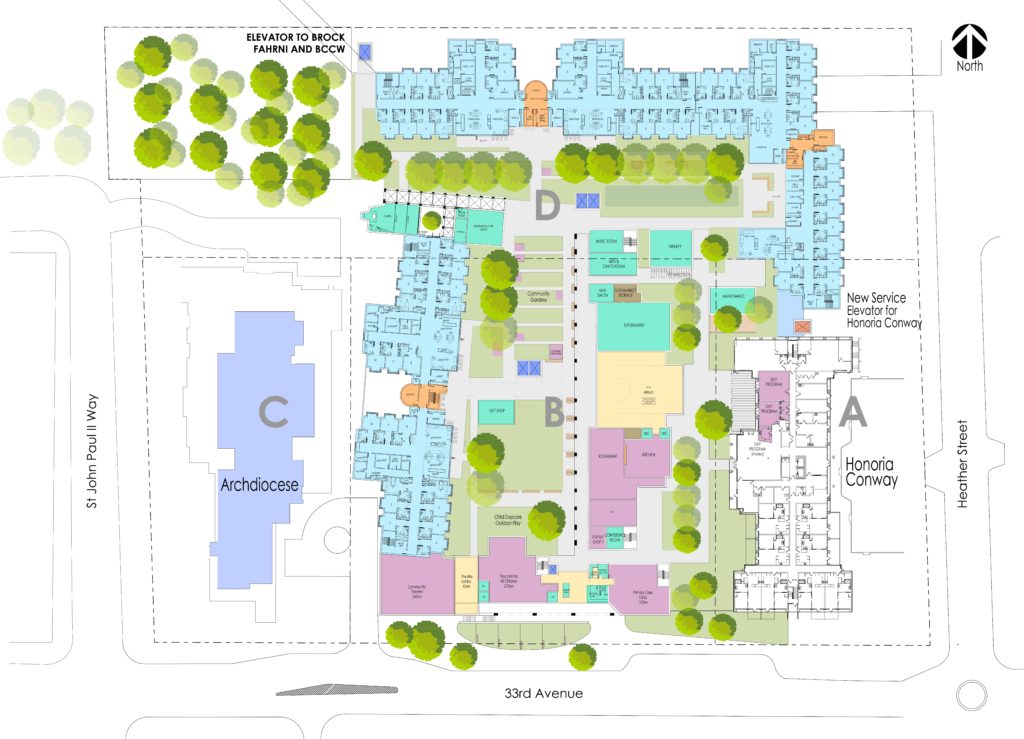
The human experience
The UK’s first nursery located within the grounds of a care home opened last year in London, adding to a growing number of examples of care home environments around the world where an intergenerational approach has been seen as a benefit to all generations on the site. There are multiple design considerations for intergenerational design, such as the safety and suitability of shared outside space. There are some commonalities between the needs of the very young and the elderly, such as anti-slip surfaces, low-rise steps, ramp access and wipe clean finishes. There are also some differences; both must be addressed in the design.
This focus on inter-generational contact should be extended as far as possible. For elders to remain vital the entire community around the facility has to be welcomed and engaged, which means providing both indoor and outdoor spaces that neighbourhood residents and businesses can use. Cafes, community gardens and performance spaces are examples.
Indeed, communal gardens open to the community can bring together several of the well-being threads of interaction, engagement, activity, observation and connection with the outside world. A community garden where residents can choose to take an active role in nurturing plants, or find a calming place to sit and relax, can both enhance the care home surroundings and promote feelings of well-being.
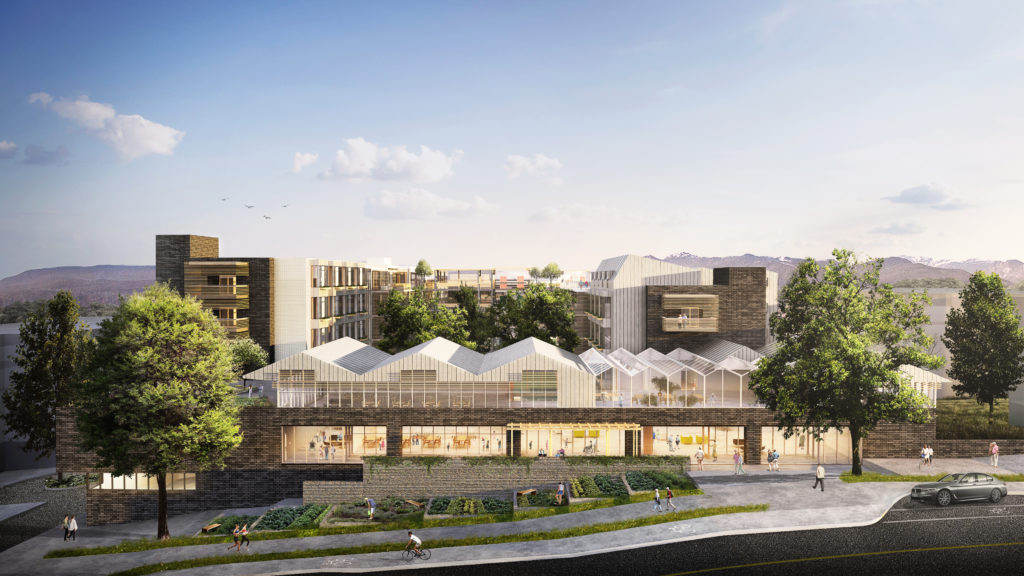
A window on the world
One of the many challenges of care home design is that the design must work for all residents, including those with limited mobility, low mood and motivation and impaired memory or cognitive function. Socialisation with other residents and intergenerational contact are important drivers for best practice design. Care homes must also provide opportunities for engagement in the world outside their immediate environment for those who cannot access it so easily.
An active frontage with views from all spaces onto the external areas within the care home, as well as outward to the wider community, allows residents to feel connected with the ‘real’ world and to see the natural changes of the time of day, season and weather. They can watch daily life going on around them, just as they may have done previously when living in a conventional domestic dwelling.
An active frontage also provides natural surveillance — the antithesis of electronic tracking and monitoring — providing instead a kind of ‘Neighbourhood Watch’ for their health and wellbeing. Positioning an active frontage to maximise the potential for engagement is critical to the success of this approach.
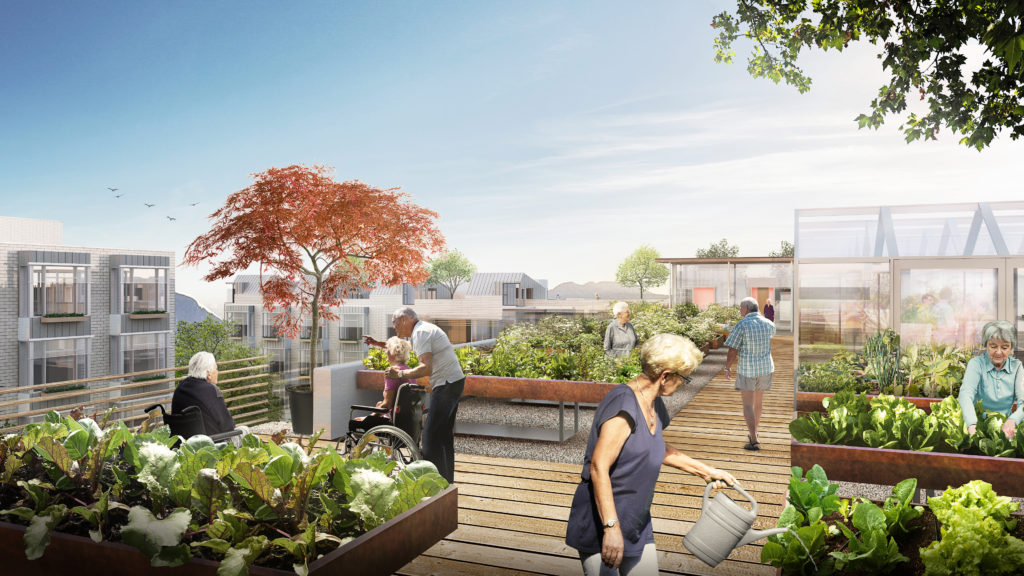
Institution Vs Community
Care home design must move away from a medical model that centres around what the caregiver needs in order to deliver its duty of care. Only a person-centred model focused on the needs of the individual can maintain quality of life and provide a meaningful existence right to the end of life.


